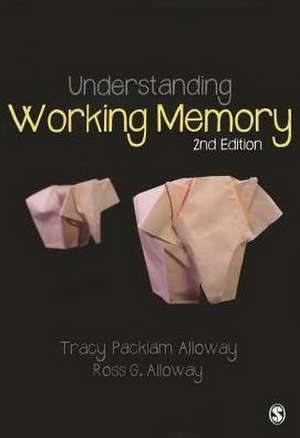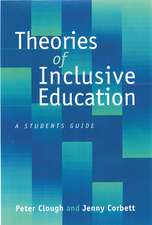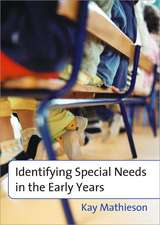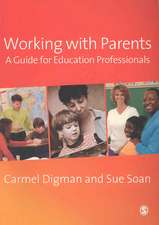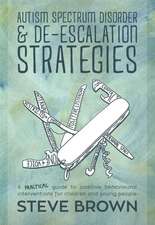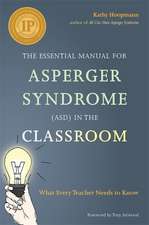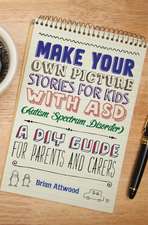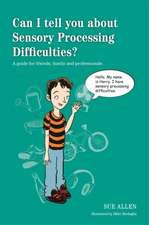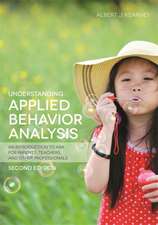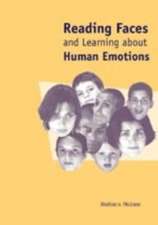Understanding Working Memory
Autor Tracy Packiam Alloway, Ross G Allowayen Limba Engleză Paperback – 9 noi 2014
Most children have a working memory that is strong enough to quickly find the book and open to the correct page, but some don’t – approximately 10% in any classroom. A student who loses focus and often daydreams may fall in this 10%. A student who isn’t living up to their potential may fall in this 10%. A student who may seem unmotivated may fall in this 10%. In the past, many of these students would have languished at the bottom of the class, because their problems seemed insurmountable and a standard remedy like extra tuition didn’t solve them. But emerging evidence shows that many of these children can improve their performance by focusing on their working memory. Working memory is a foundational skill in the classroom and when properly supported it can often turn around a struggling student’s prospects.
This book will make sure you are able to spot problems early, work with children to improve their working memory and ensure they reach their full potential.
How does the book work?
Each of the following chapters includes a description of the learning difficulty (WHAT), followed by an inside look into the brain of a student with the disorder (WHERE), their unique working memory profile (WHY), and classroom strategies to support working memory (HOW). There are two types of strategies: general working memory strategies that can be applied to all students in your class, and specific working memory strategies for each learning difficulty. The final chapter (Chapter 9) provides the student with tools to empower them along their learning journey.
The aim in supporting students with learning difficulties is not just to help them survive in the classroom, but to thrive as well. The strategies in the book can provide scaffolding and support that will unlock their working memory potential to boost learning. They are designed to be easily integrated within the classroom setting as a dimension of an inclusive curriculum and used in developing an individualized education program (IEP) for the student.
The strategies recommended here can also complement existing programs that support a core deficit, such as a social skills program for a student with autistic spectrum disorder, or behavior modification for those with ADHD. Each chapter also includes:
- Try It box: Provides the reader with an opportunity to have a hands-on understanding of the material
- Science Flash box: Gives the reader a snapshot of current and interesting research related to each chapter
- Current Debate box: Discusses a controversial issue pertaining to the disorder
Ross Alloway is the CEO of Memosyne Ltd, a company that brings cutting-edge scientific research to parents.
| Toate formatele și edițiile | Preț | Express |
|---|---|---|
| Paperback (1) | 275.72 lei 22-36 zile | +13.11 lei 6-12 zile |
| SAGE Publications – 9 noi 2014 | 275.72 lei 22-36 zile | +13.11 lei 6-12 zile |
| Hardback (1) | 819.32 lei 43-57 zile | |
| SAGE Publications – 9 noi 2014 | 819.32 lei 43-57 zile |
Preț: 275.72 lei
Nou
Puncte Express: 414
Preț estimativ în valută:
52.78€ • 57.35$ • 44.36£
52.78€ • 57.35$ • 44.36£
Carte disponibilă
Livrare economică 31 martie-14 aprilie
Livrare express 15-21 martie pentru 23.10 lei
Preluare comenzi: 021 569.72.76
Specificații
ISBN-13: 9781446274217
ISBN-10: 1446274217
Pagini: 168
Dimensiuni: 170 x 242 x 9 mm
Greutate: 0.3 kg
Ediția:Second Edition
Editura: SAGE Publications
Colecția Sage Publications Ltd
Locul publicării:London, United Kingdom
ISBN-10: 1446274217
Pagini: 168
Dimensiuni: 170 x 242 x 9 mm
Greutate: 0.3 kg
Ediția:Second Edition
Editura: SAGE Publications
Colecția Sage Publications Ltd
Locul publicării:London, United Kingdom
Recenzii
This is a clearly written and well-organised book, providing valuable information about working memory and how it can affect individuals’ learning and progress in an educational context. It is a ‘must read’ for all teachers and support assistants in primary and secondary schools. Many parents are likely to find the book of interest to them if they have a child with any of the disorders discussed in the book. Undergraduate psychology students would also benefit from reading this book as background understanding to working memory in context – the references and further reading offering opportunity to extend their knowledge.
The clear structure and lack of jargon make the book accessible to a wide range of readers... I was especially impressed that anxiety disorders were included because these can have a debilitating effect on a student, and yet they are often missed out of books on special needs. The case studies are helpful and provide examples of how students can be affected, together with specific strategies that can be used to help them.
It is a very handy, "go to" reference for students, teachers and parents about the nature of working memory difficulties and how these can manifest themselves within the areas of Dyslexia, Dyscalculia, DCD, ADHD, ASD and Anxiety disorders.
The book is a refreshing welcome addition to the field of special education, and promises to be a great success among educators.
The clear structure and lack of jargon make the book accessible to a wide range of readers... I was especially impressed that anxiety disorders were included because these can have a debilitating effect on a student, and yet they are often missed out of books on special needs. The case studies are helpful and provide examples of how students can be affected, together with specific strategies that can be used to help them.
It is a very handy, "go to" reference for students, teachers and parents about the nature of working memory difficulties and how these can manifest themselves within the areas of Dyslexia, Dyscalculia, DCD, ADHD, ASD and Anxiety disorders.
The book is a refreshing welcome addition to the field of special education, and promises to be a great success among educators.
Cuprins
Epilogue by Kim Grant
Chapter 1: Our Brain's Post-it-note
Chapter 2: Diagnosing Working Memory
Chapter 3: Specific Learning Disorder: Reading Difficulties (Dyslexia)
Chapter 4: Specific Learning Disorder: Maths Difficulties (Dyscalculia)
Chapter 5: Developmental Coordination
Chapter 6: Attention Deficit Hyperactivity Disorder (ADHD)
Chapter 7: Autistic Spectrum Disorder
Chapter 8: Anxiety Disorders (by Evan Copello)
Chapter 9: Student Strategies and Training
Appendix: Working Memory strategies table
Epilogue by Kim Grant
Chapter 1: Our Brain's Post-it-note
Chapter 2: Diagnosing Working Memory
Chapter 3: Specific Learning Disorder: Reading Difficulties (Dyslexia)
Chapter 4: Specific Learning Disorder: Maths Difficulties (Dyscalculia)
Chapter 5: Developmental Coordination
Chapter 6: Attention Deficit Hyperactivity Disorder (ADHD)
Chapter 7: Autistic Spectrum Disorder
Chapter 8: Anxiety Disorders (by Evan Copello)
Chapter 9: Student Strategies and Training
Appendix: Working Memory strategies table
Epilogue by Kim Grant
Notă biografică
Descriere
This new edition of the previously titled Improving Working Memory, introduces readers to the topic; and provides strategies to use in the classroom to support student's additional learning needs.
